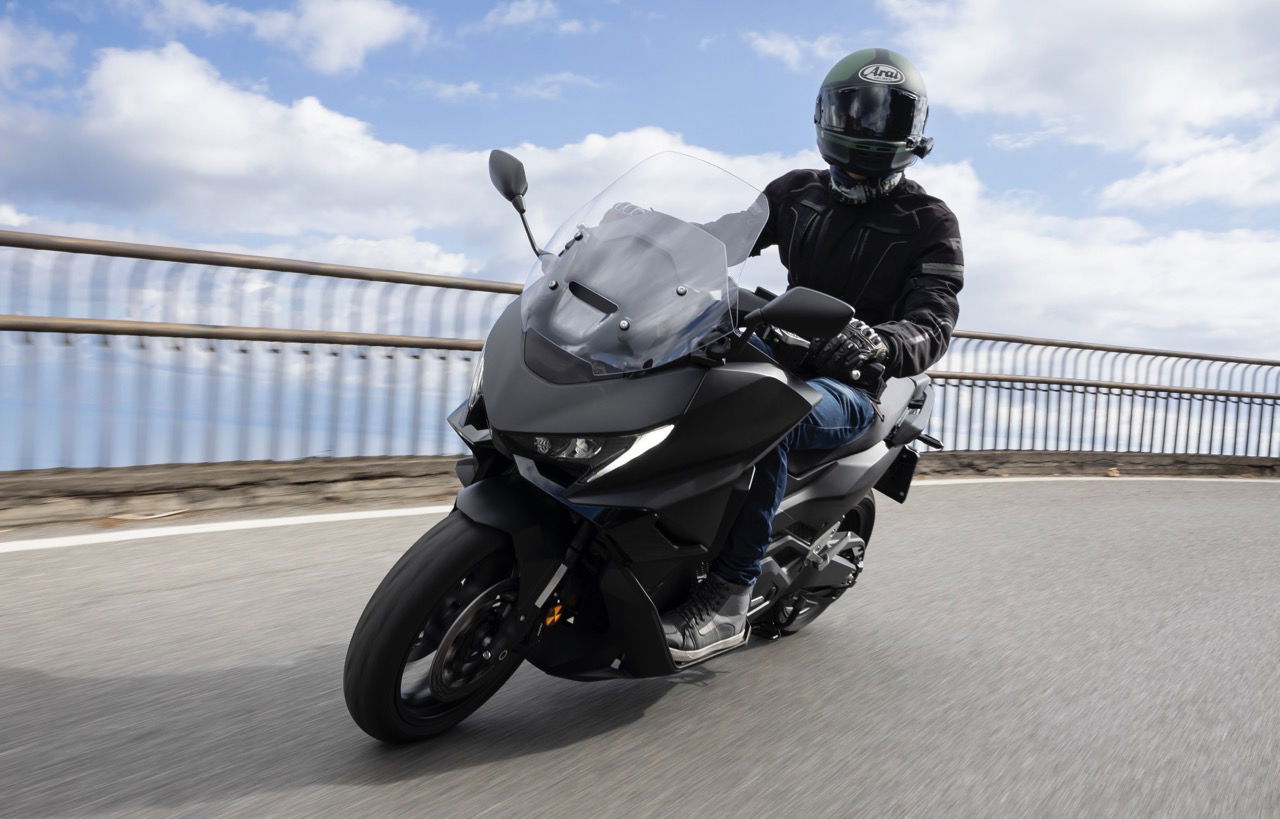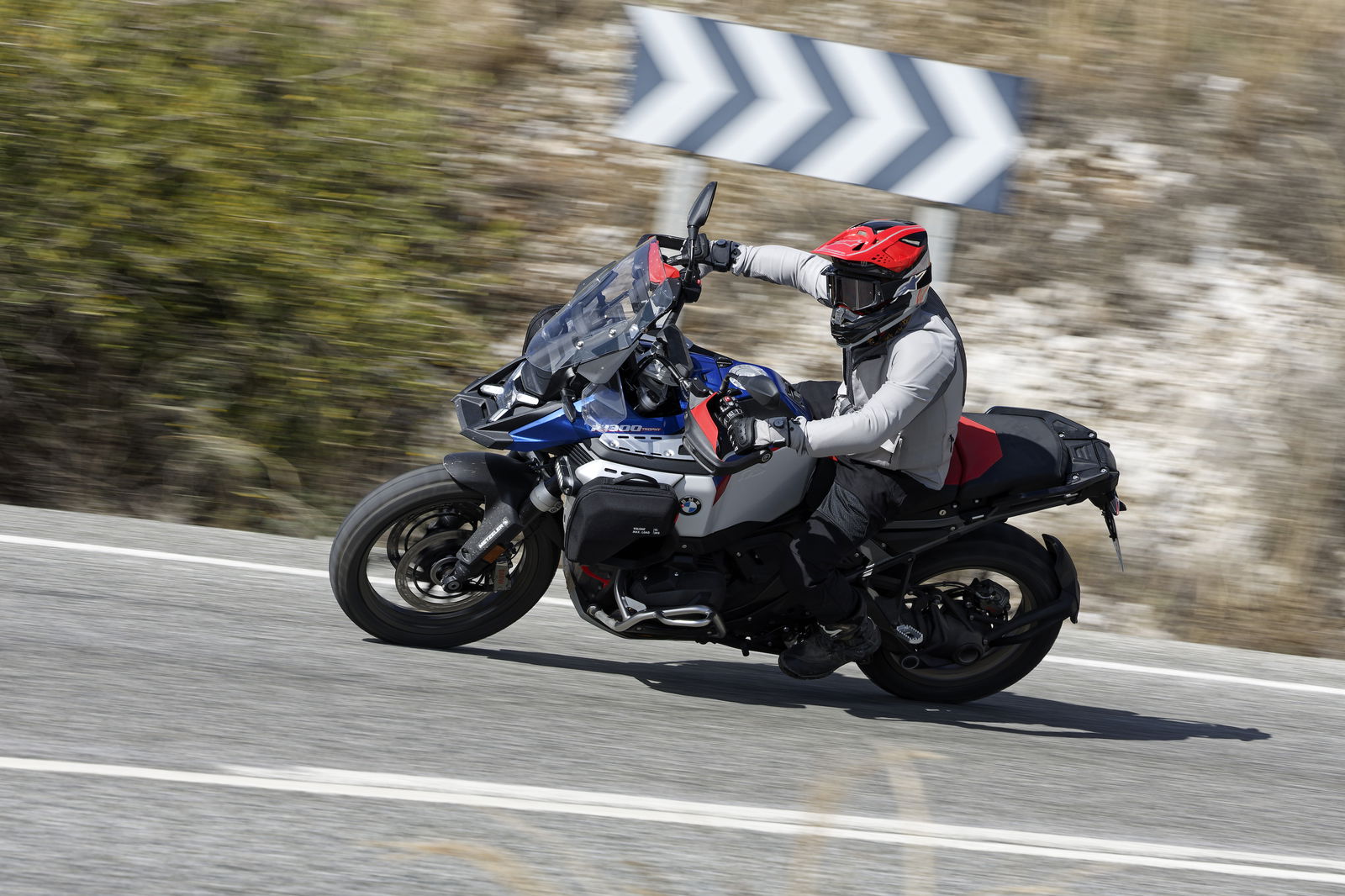2025 Kawasaki Versys 1100 Review: Touring Perfection?
A new more powerful and torque-rich Kawasaki Versys has landed now boasting a chunky 133bhp

Launched in 2012, the Kawasaki Versys 1000 was the Akashi-based brand's go at cracking the long-legged road-touring nut by utilising its much-loved inline four-cylinder engine.
Initially a slightly gawky-looking ugly duckling of a bike, its evolution was fast, with it going on to become the sporty-looking and striking bike it is today. That look remains for 2025, as the ‘new’ top-spec Versys looks very much like the outgoing model. All of the 2025 Versys updates take place beneath the skin of its long-distance tourer.
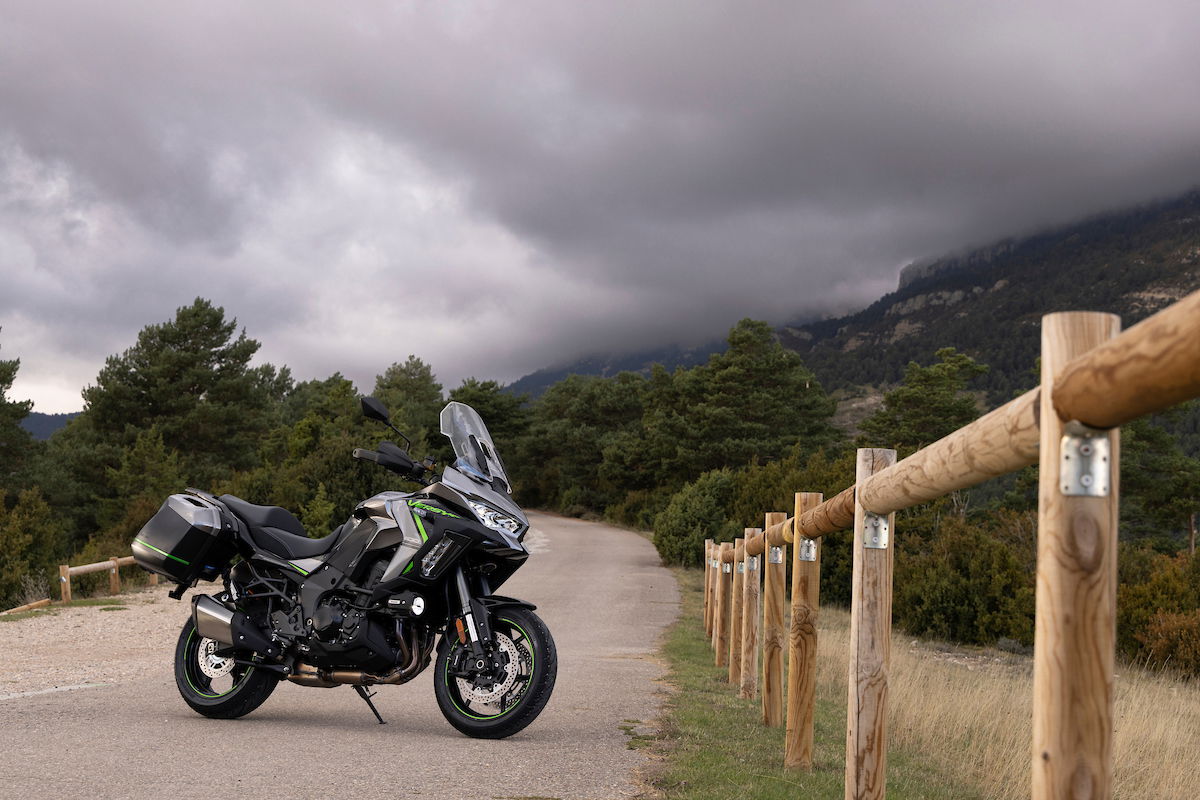
What’s new
The bike's name gives away its biggest change for the incoming model year, as the engine of the new three-machine range has swelled from 1,043cc to 1,099. The capacity hike might be relatively small, but the increase in power is fairly hefty, as it now makes 133bhp - up from the 120bhp of the previous versions. Peak torque is also up, with the 2025 bikes producing 82.6lb ft of twist compared to the 75lb ft of the 1,000cc version of the popular touring machines.

The increased grunt and torque are thanks to a 3mm longer stroke while retaining the same 77mm bore as before. The airbox has also been redesigned and now features longer intake ducts to boost mid-range grunt. New slightly thinner throttle bodies are also present, which are linked to redesigned ducts which are said to speed up the airflow through the intake. The compression ratio is now 11.8:1 (up from 10.3:1), while the ECU has been revised to suit.
The rest of the updates to the bike are generally small, with the frame and swingarm seemingly the same as before. One chassis element changed on the 2025 model is a slightly larger 260mm rear disc, up 10mm from the previous bike.
There are further alterations in terms of spec and trim. The new base model, the Versys 1100, comes with manual suspension, an LCD and analogue dash and no cornering ABS or traction control. Meanwhile, the Versys 1100 S gains IMU-controlled TC and ABS, plus a TFT screen that is larger than the LCD on the base model and still matched to an analogue tacho. The top-spec Versys 1100 SE gains the same spec as the S along with the inclusion of KESC (Showa Skyhook electronically adjusted and semi-active suspension). Both the S and SE also gain a larger screen, a quickshifter, heated grips, and hand guards as standard.
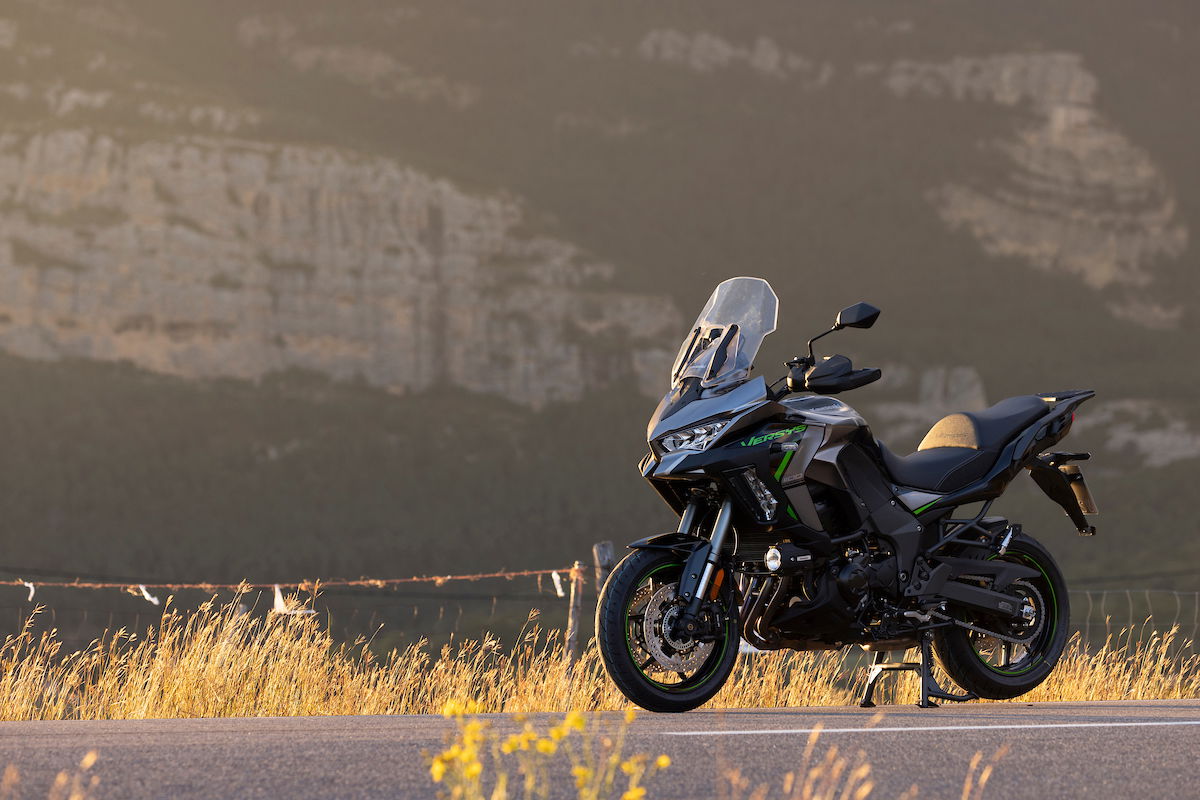
Versys 1100 Price, colours and availability
The base model Versys 1100 S will be landing in dealers with an MSRP of £11,899, while the S will come in at S £13,649. The top-spec SE will come in at £15,649. You also have two trim levels to choose from, either Tourer, which gains two 28-litre panniers, inner bags and a tank pad, or the top-spec Grand Tourer, which gets you frame sliders, fog lamps, navigation bracket, and a 47-litre top-box. Bikes are set to be in dealerships in the UK in November 2024.
The stock 1100, S, and SE are each available in Metallic Matte Grey and Diablo Black, while the S and SE are also available in Pearl Robotic White and Metallic Diablo Black.
For this European press launch, we were riding in Spain, around an hour north of Barcelona on some mountain roads, motorways and dual carriageways. The weather wasn’t great, and while that is normally not ideal for a bike launch, it felt perfect on he Versys. All in all, we covered nearly 200 miles during the day, including photos and video and an extended tour on the way back - because I got lost…
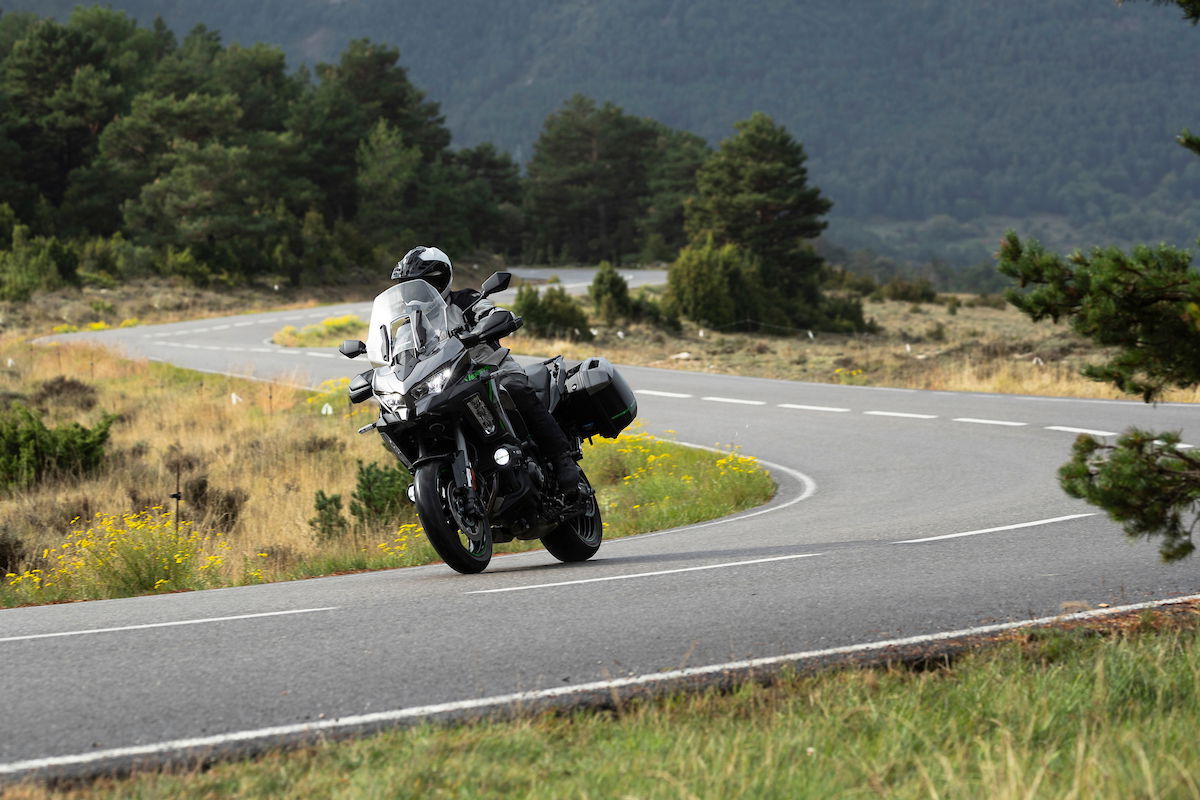
What’s it like to ride?
The biggest Versys in the range remains a big seller for Kawasaki and in the grand scheme of things, a much-loved bike across the world. It doesn’t do this by being the flashiest, most powerful or best looking. It does this by just being a really good bike to attacking a long tour, carrying two people and all their luggage.

While the near-200 miles that lie ahead can’t be considered on a par with a Euro tour, having seen the route it did at least have enough variety to give a good taste of what the Versys can do. Peeling out the hotel at 8:15am it was cool and damp, and it didn’t take much to have the traction control chiming in. We’ll put that down to cold tyres and damp roads.
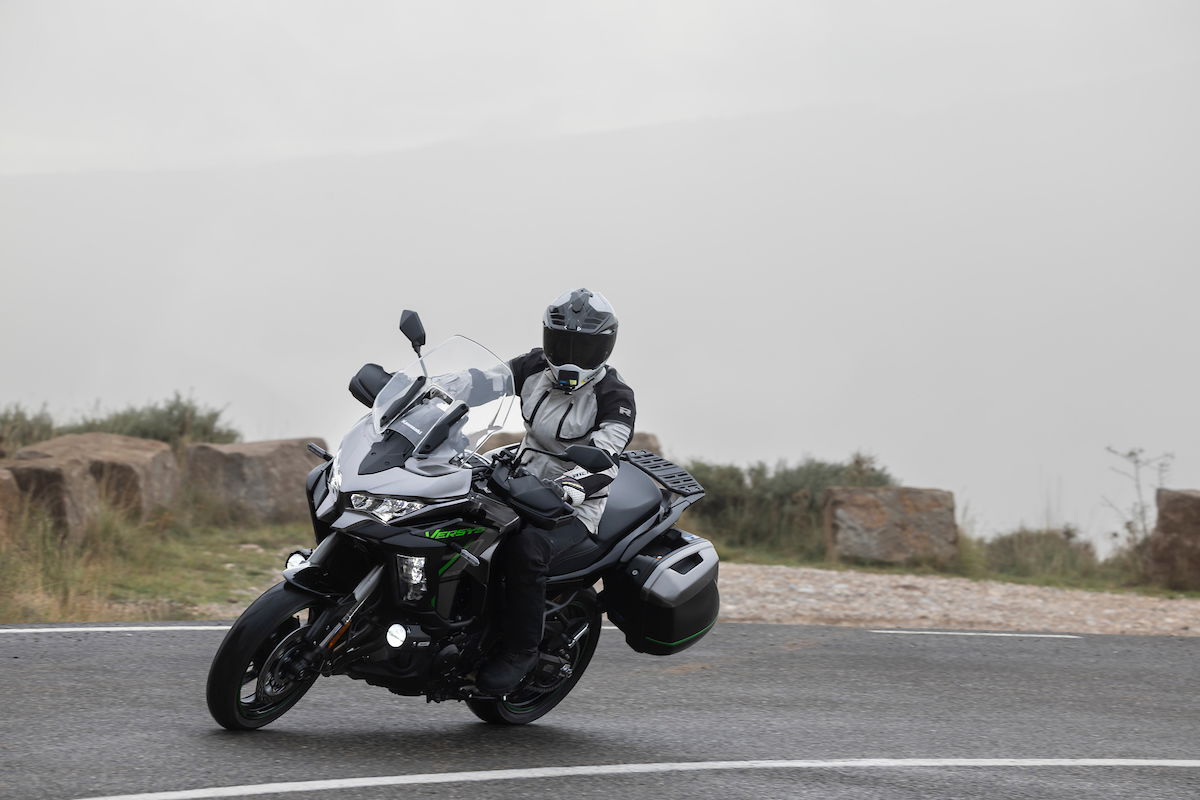
All in all though, aside from the new ‘1100’ decals on the flanks, there is no clue you are on the bigger bike. The colours are the same, the switchgear and cockpit as it was and the riding position exactly as with the outgoing 1,000cc (1,044 actually!) edition. The TFT dash is claimed to be ‘new’ on the press kit, but it's the same hardware just with updated graphics. It is though much easier to read, less stylised and clearer to read at a glance.
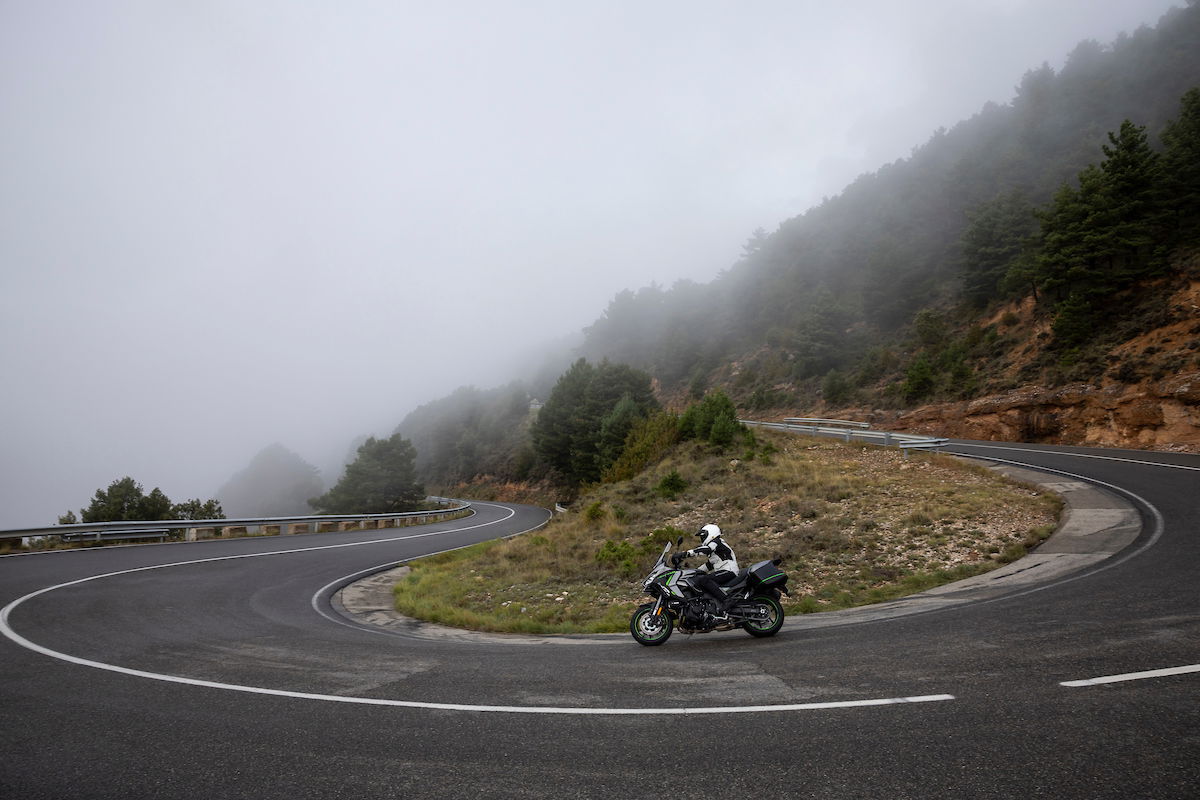
Manresa, the launch location, is a funny place, with nice roads interspersed with very industrial towns that all look to be closed down and covered in dust. There is though enough in the early part of the ride to keep me interested, and despite the slippy asphalt and tyres that aren’t the latest sports touring offerings from Bridgestone, it’s all as I’d hoped it would be. Big, comfy, easy to ride and when you need to, happy to press on.
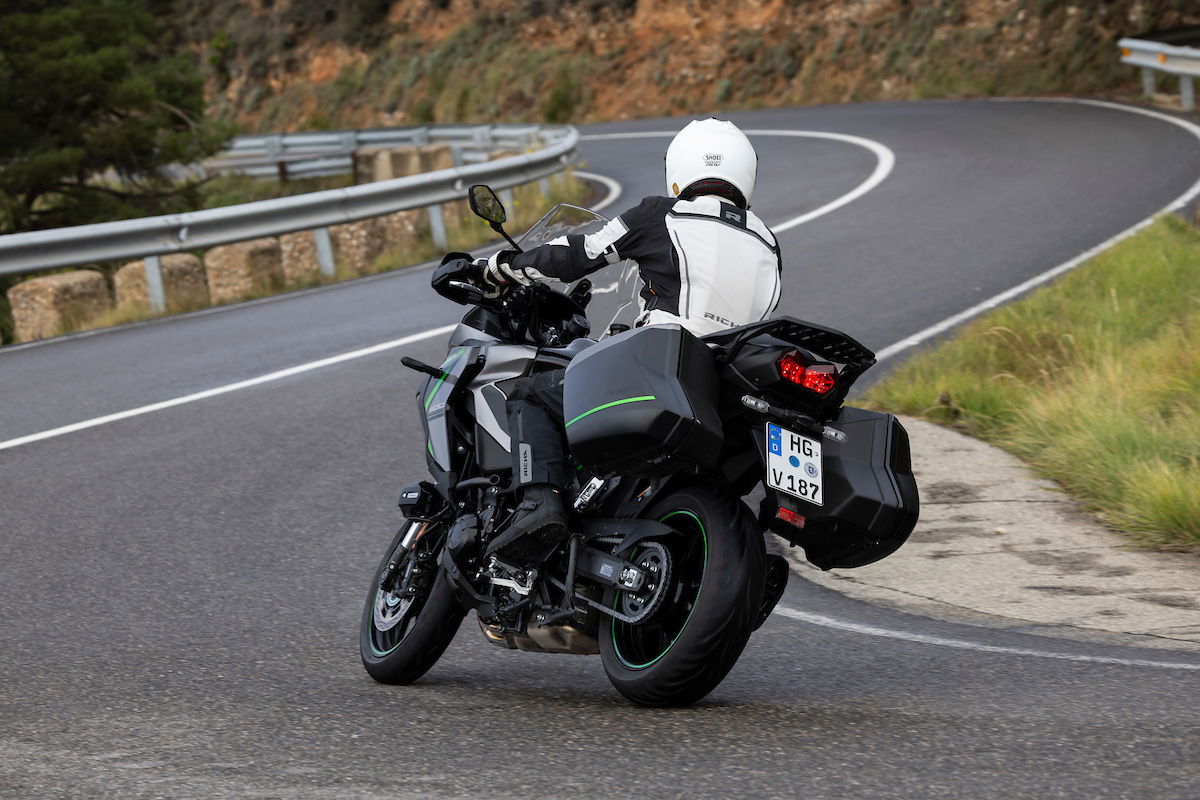
After an hour and a bit of riding mixed roads and not learning much, we are at the photo stop. Following an hour or two of faffing about in fog and showers getting pics and video, we get what we’ve all come for, the ‘freeride’ element of the launch. Kawasaki is the only brand that does it, they chuck you a sat nav with the hotel location loaded in and tell you to be there by 5pm. It’s great and really gives you the chance to focus on the bike, not keeping up with your mate 100 yards up the road.

After cramming down my lunch, pig cheek which was complete with the jawbone (!), I’m first out the gate and happily enough the weather has picked up. Timid sunshine is drying the roads as I pull out from lunch and no longer governed by the speed of the group I start to get to grips with the new bike's engine. It’s basically a lengthened version of the old engine, 3mm longer in stroke and with the same bore as before. Intake changes and an ECU remap, as well as softer cams and a heavier crank, are joined by a new catalyser design. The result is more power, but being a fairly chunky 259kg, the top-end poke is pretty well hidden. What I am feeling from the engine is a much gutsier mid-range. It pulls more cleanly from the bottom of the mid-range and, thanks to the extra ponies, doesn’t run out of puff at the top.
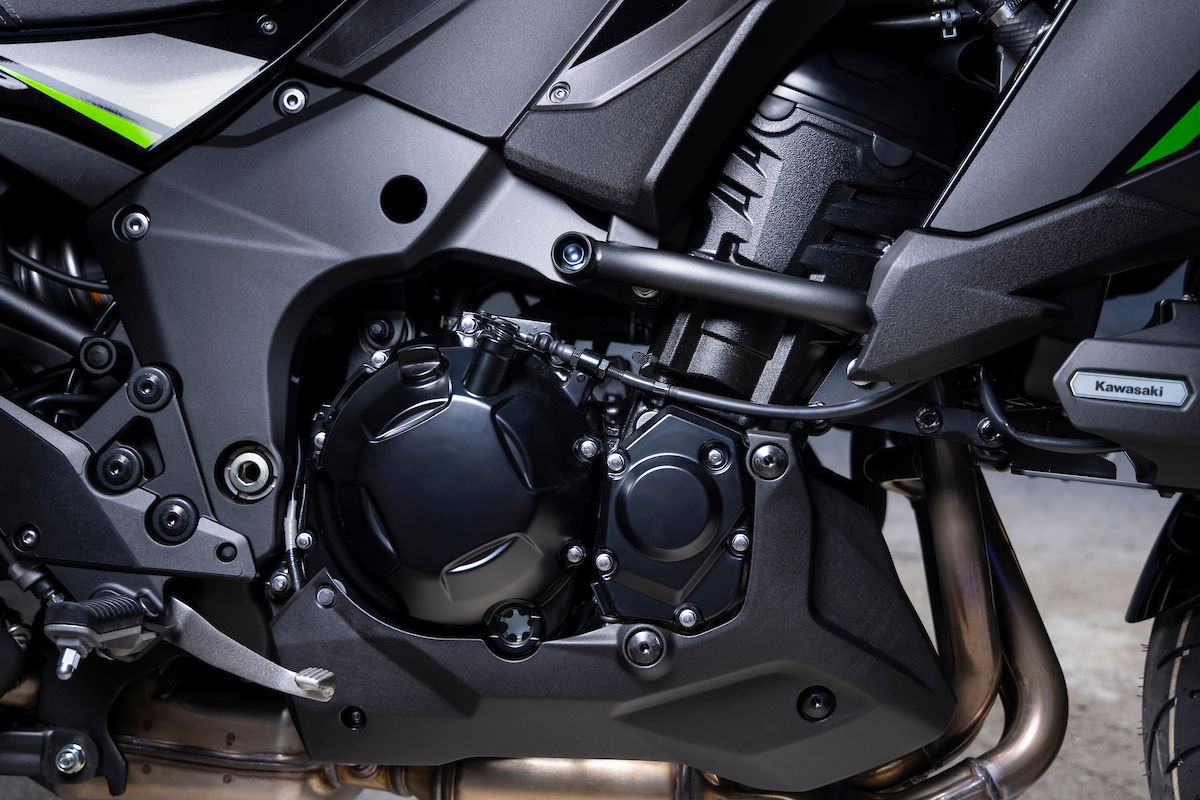
That being said, I’m not really bothering the rev-limiter that much. It’s so gutsy, I’m finding myself shifting up at between six and seven thousand RPM, as it just thrives in that chunky mid-range area. Because of this, I’m not inclined to hook a lower gear as much as I would on the old bike. 6th gear roll-on overtakes on the last model would almost always have you knocking down a peg, but you can now hustle past a slower vehicle at motorway speeds without the inline-four really seeming to break a sweat. It also feels less highly strung than before. Because you aren't wringing its neck to frantically get around what’s in front, the whole ‘touring’ experience feels more refined and relaxed.

Another mechanical element I’m noticing an improvement in is the quickshifter. The gearbox is as before (longer final drive and taller 5th and 6th gears aside) but the quickshifter feels much more willing to shift smoothly at lower revs. The final two cogs and longer final drive are claimed to provide an ‘overdrive’, according to the press release, although that isn’t what I’d call it. I’m still up at 6,000rpm at motorway speeds, and 500 or 1,000rpm lower than that would still be nice.
Because the changes to the bike are minimal aside from the engine, there’s really not a whole lot to say. If you’ve ridden the previous generation bike that is. If you haven’t ridden the previous model - read on.
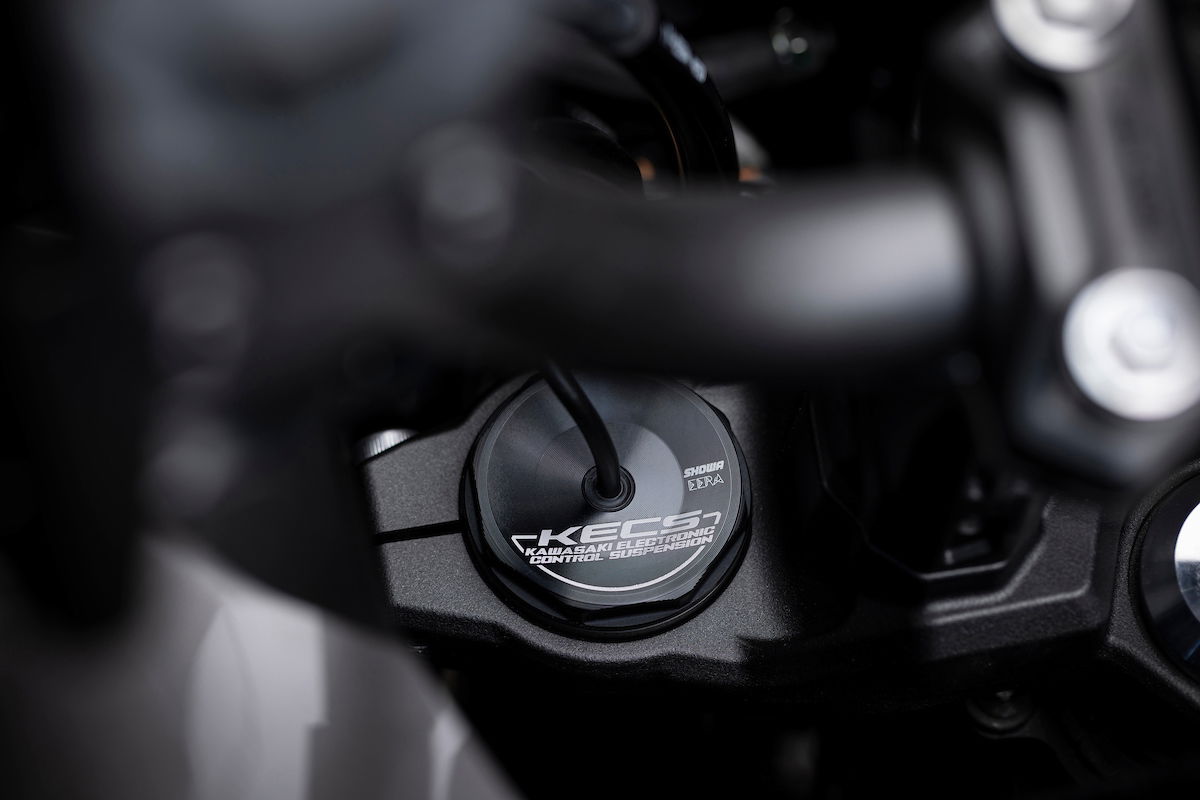
Showa’s Skyhook suspension system might not have the pub bragging rights the Ohlins Smart EC 2.0 kit has, but that doesn’t make it bad. It does the same job just slightly differently. You’ve got great levels of adjustability, which is all at the touch of a button. Quick and easy changes can be made on the fly too, by simply adding more preload to the bike by telling it there is more weight on it than there actually is.
I dial in more load, and the bike picks up and is noticeably more eager to turn. It’s still a big bike, but wears it well and doesn’t feel cumbersome. You ask it to do something and it’ll oblige. I’m also surprised by the grip of the tyres, although they do feel a little numb when the roads are wet.
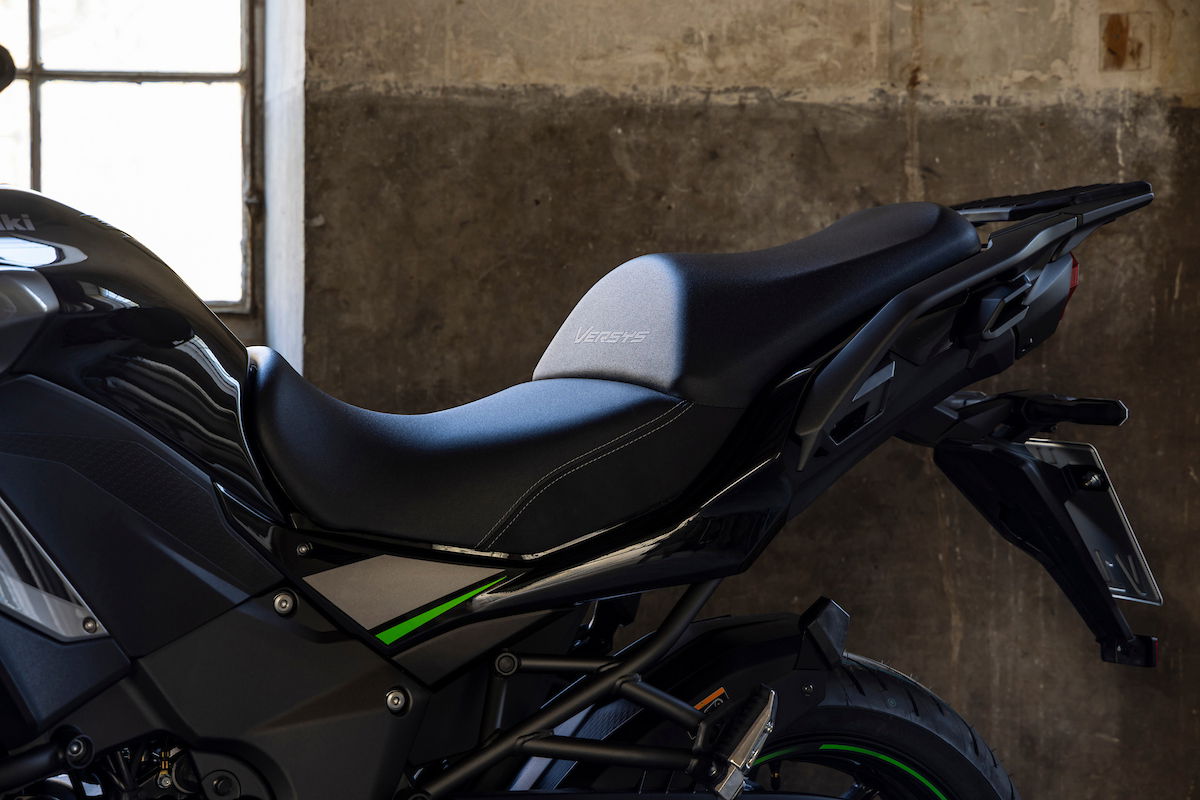
On the comfort front, the Versys is everything you need from a long-distance tourer. Roomy up top and below, and with one of the biggest and comfiest pillion seats this side of the DFS sale. The crowning glory on the comfort front, though, is the screen. The S and SE both get a vast, heavily contoured screen. It’s adjustable, through 40mm which is stepless, but sadly can’t be changed on the fly. Once you’re behind it, though, you could as well be sat in a car. Even on the lowest setting my head is within a bubble of still air, and on the highest position even giants (those over five foot eight inches) should be nicely nestled and very comfortable.
While we are on the comfort, I am getting some vibes when the revs reach the top. It’s not really a problem and only occurs when you get past 7,500rpm. With the new engine not really requiring that kind of gusto, I’m not having a massive issue with it.
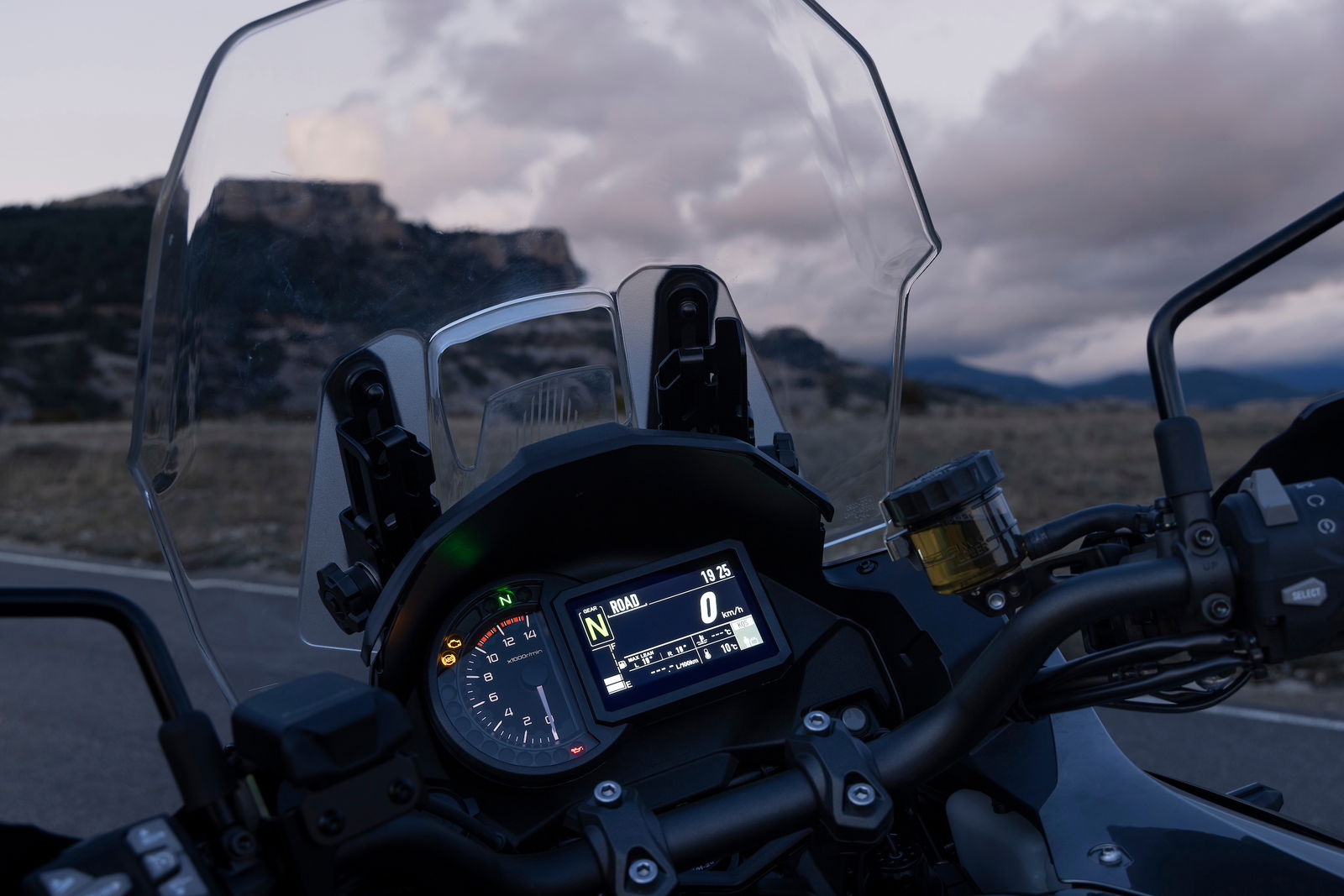
I mentioned that the TFT is new, and while the modes have been adjusted to suit the new engine and increased output, the rest of how you’ll use it is as simple as before. Mode buttons on the left switch with a long hold, and a short stab will scroll through the riding info on the dash. You’ll also find the preload button here too, making it easy to change all the important stuff on the fly. The fog light button isn’t on the switchcube, and happily, you don’t have to enter the TFT to switch on the fogs which are standard of the S and SE. Instead, you reach around the dash and flick the switch just below the TFT.
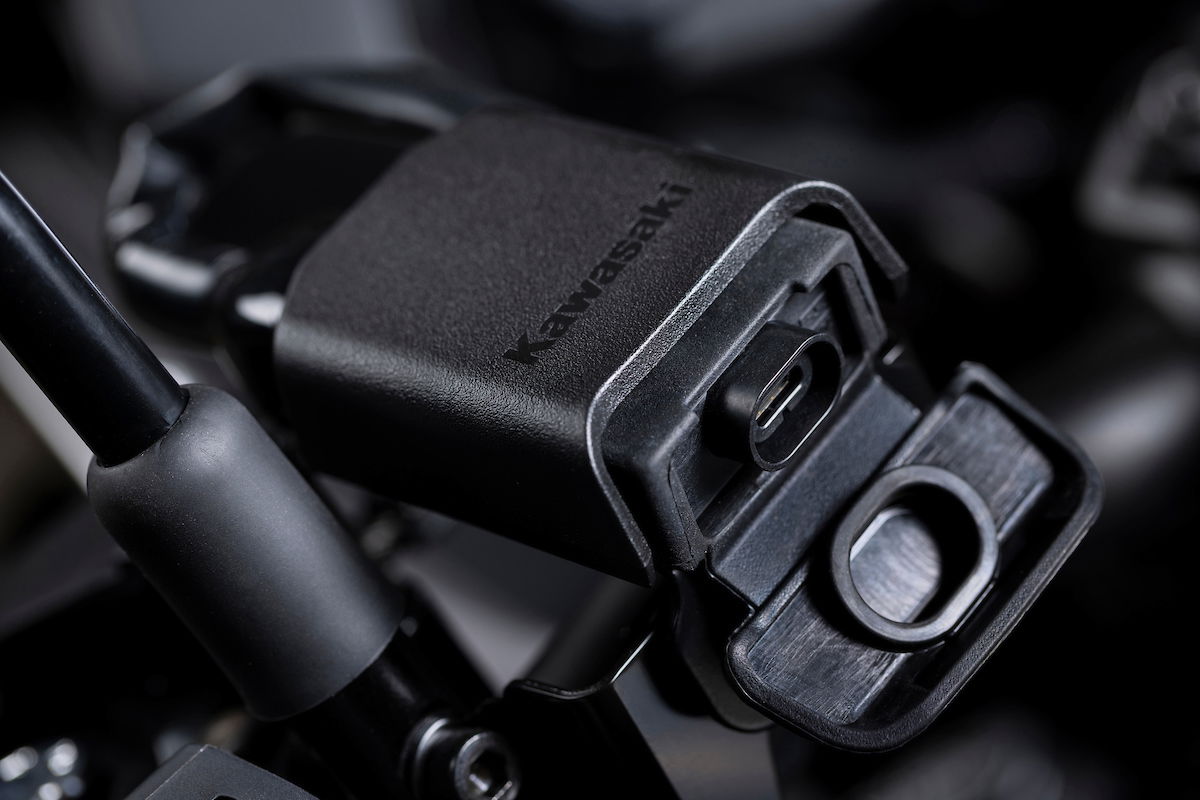
New for this year, and also only on the S and SE, is a USB C socket, which is accompanied by a traditional fag lighter style socket. The USB C is a nice addition, but it is a bit Heath Robinson in its design, and it leads me to believe that I could knock up something sturdier in my shed with a biscuit tin and some brass nails!

Should you buy a 2025 Versys 1100 SE?
Taking into account the value for money offered by the big Kawasaki, it’s hard to argue that the new Versys doesn't provide you with a lot of bike for a very competitive price. It’s true that it’s not the most exotic of the bunch, but it’s not trying to be. It’s also one of the few bikes in the 1,000cc adventure touring sector that doesn’t parade itself as some wannabe mud-plugger - that in reality won’t go anywhere near a trail in its entire life.
Because of this, it can focus simply on being a very good road-biased, long-legged sports tourer. You have all the good attributes of an adventure bike like brilliant comfort, room for two, lots of luggage and a 21-litre fuel tank. But you don’t have any of the compromises of a bike that has some off-road ability.
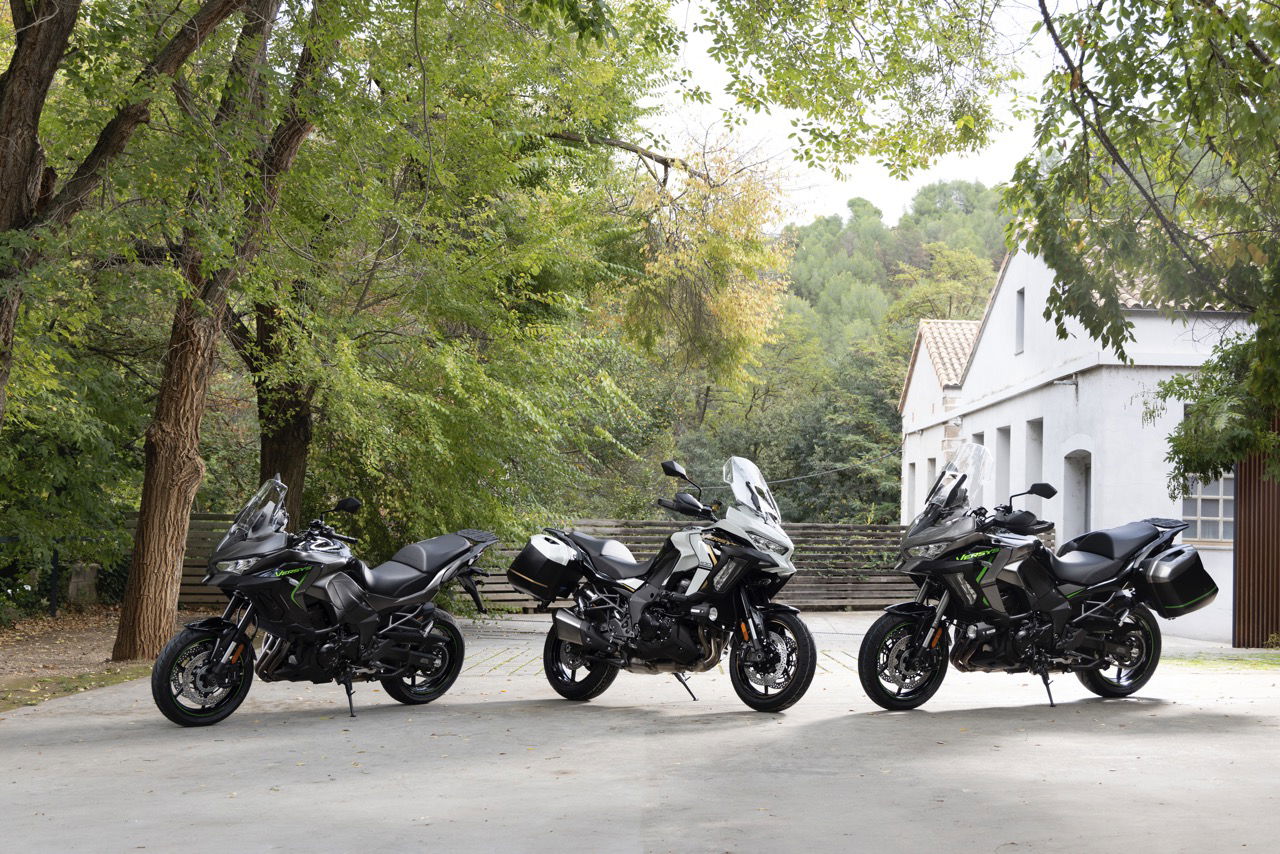
The Versys also offers something that you don’t get anywhere else in the over 1,000cc adventure touring category - a deliciously nice inline four-cylinder engine. And when it comes to big-bore four-pots, the Japanese factories make the best there is. We’ve been ushered into a world where for a large-capacity adventure bike to succeed it either has to be a V-twin, a V-four, a lumpy triple or a cross-plane twin masquerading as a V configuration. That’s great if you are going to actually stray from the asphalt, but how many owners of bikes like this can hand on heart say they ride on trails more than they ride on the road?
You can book a test ride on the new Versys 1100 and Versys 1100 SE here:
